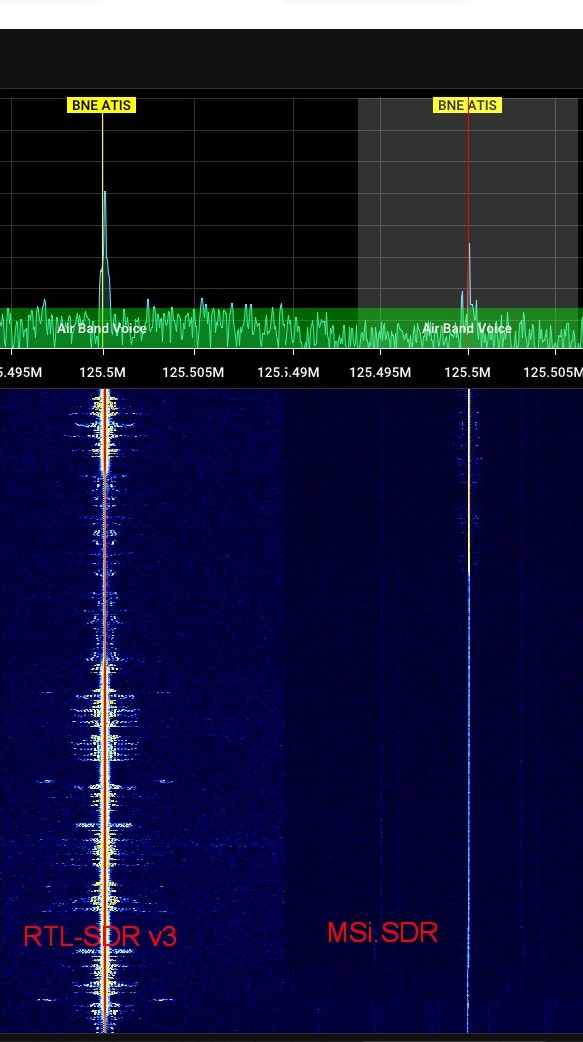MSi.SDR (SDRPlay RSP1A clone) vs RTL-SDR v3 dongle
After the mishap from the previous discone post, I came across the MSi.SDR on Aliexpress while looking for a replacement dongle. I was mainly enticed by the possibility of 10MHz visible bandwidth for only 40 USD. It is apparently a clone of the SDRPlay RSP1A, or at the very least uses the same Mirics MSi2500 14-bit ADC and MSi001 tuner chips, which are supposed(?) to be exclusive to SDRPlay. That’s where the similarities end because the MSi.SDR has very minimal filtering compared to the RSP1A which has numerous input filters. However, the MSi.SDR does come with a metal case (vs plastic RSP1A) and is very compact, being smaller than the RTL-SDR. Two SMA cables and ferrites are included. Also note the interface is micro USB.
The first test was using the discone antenna (still uninstalled) manually raised to around 1.5m. I tuned to the constant Brisbane Airport ATIS at 125.5MHz and adjusted the gain of both devices for maximum SNR. The transmission was clear with a solid 40dB SNR on the RTL-SDR, but it was unreadable with <20dB SNR on the MSi with only the carrier being noticeable. Scanning around VHF/UHF the difference is painfully obvious. The MSi.SDR also seems to have an issue with the LNA gain control where the gain steps are not very clear and jump around instead of increasing as you move the slider. To make matters worse, there are many spurs that dance all over the spectrum, particularly at lower gains.

I then tried HF hoping that the MSi.SDR would be somewhat functional with its built-in upconverter compared to the RTL-SDR which has to use the direct sampling Q branch ‘hack’. (I have also tested a cheap upconverter for the RTL-SDR before which was usable but the lack of TCXO was irritating.) The test antenna is a YouLoop clone from Aliexpress, which is not ideal (Airspy recommends it only for SDRs with MDS < -140dBm). Again, it was at ground level.
This time the MSi.SDR is clearly better, picking up some faint signals on 80m. I will have to test it again with a long wire antenna up on the roof to give it a better chance. The RTL-SDR is able to pick up strong broadcast AM only. The MSi.SDR, despite its higher resolution / dynamic range, is still affected by the nearby AM transmitter, meaning it will need an AM bandstop or high pass filter.

I ended up attaching the RTL-SDR v3 with a wideband LNA and bandstop filter to the discone antenna for VHF/UHF use, while the MSi.SDR is connected directly to the YouLoop in the roof space for HF testing (which I’m still new to). I did manage to decode a BOM weather fax on 5100kHz which was an exciting start. The next step is definitely to install a better HF antenna outdoors.
For more technical info, see this great EEVblog forum thread.